Athens Unveiled: A Two-Day Journey
Experience the heart of Athens in this immersive tour, exploring ancient landmarks and vibrant culture over two days walking. Join us on this free walking tour!
Time
3 Hours
Stops
16 Places
Distance
6.9 km
Acropolis of Athens
Begin your journey at the iconic Acropolis, the ancient citadel that epitomizes the glory of classical Greece and offers breathtaking views of the city.

Acropolis of Athens (Source: Google Maps)
The Acropolis of Athens is an ancient citadel that stands as a symbol of classical Greece. Dominating the skyline, it is home to the Parthenon, a temple dedicated to the goddess Athena, constructed in the 5th century BC. This architectural marvel showcases Doric design, with its iconic columns and intricate friezes depicting scenes of mythology and Athenian life. The Acropolis served not only as a religious center but also as a hub of political activity, representing the power and culture of ancient Athens. Today, it is a UNESCO World Heritage Site, attracting millions of visitors who come to admire its historical significance and breathtaking views of the city below.
Roman Agora
A short walk away, the Roman Agora is an ancient marketplace that reflects the city's transition from Greek to Roman rule.
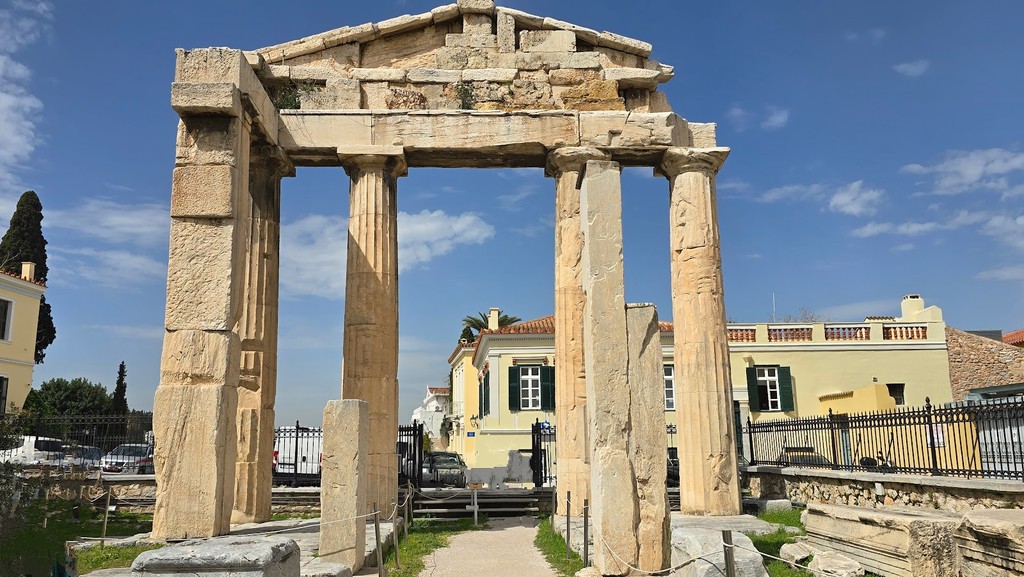
Roman Agora (Source: Google Maps)
The Roman Agora in Athens, established in the 1st century BC, reflects the city’s transition from Greek to Roman rule. This ancient marketplace served as a social and commercial center, where citizens gathered for trade and public discourse. Notable structures include the Tower of the Winds, an ancient clocktower, and the remains of the Stoa of Attalos, which has been reconstructed and now houses a museum. The Roman Agora illustrates the blend of Greek and Roman architectural styles and is a testament to the city’s evolving identity. It invites visitors to explore the rich history of Athenian life during the Roman era, offering insights into daily activities, commerce, and governance.
Monastiraki Square
Head to the bustling Monastiraki Square, known for its vibrant flea market, eclectic shops, and a mix of ancient and modern influences.
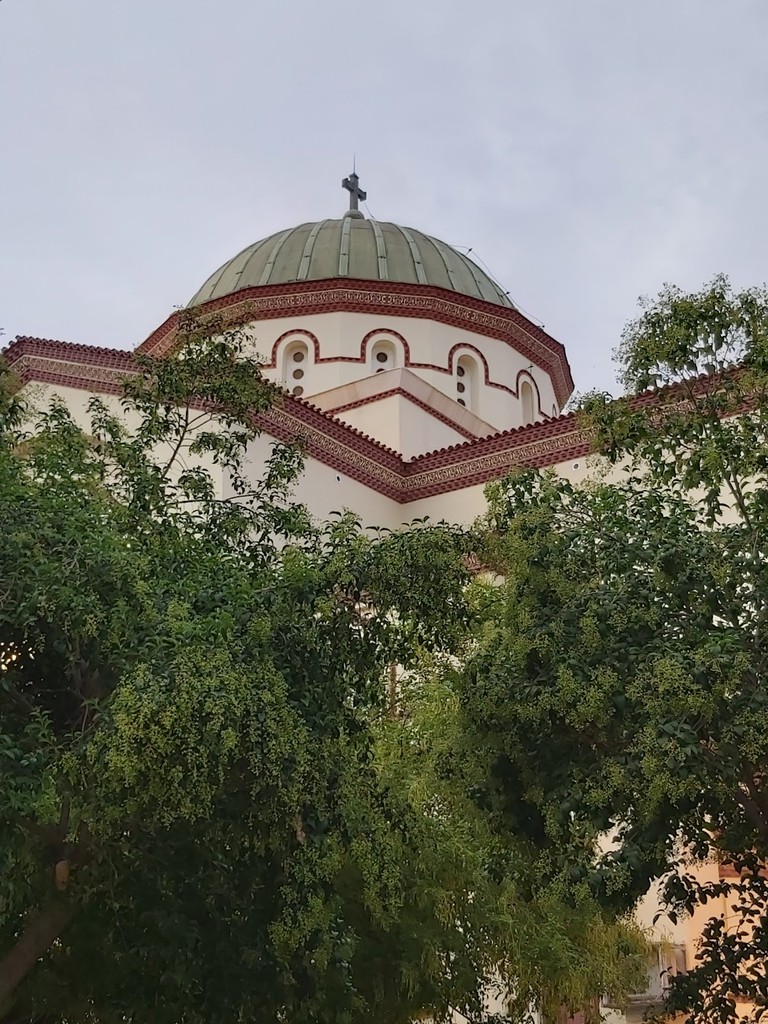
Monastiraki Square (Source: Google Maps)
Monastiraki Square is a vibrant hub of activity in Athens, known for its eclectic mix of shops, restaurants, and historical sites. It serves as a meeting point for locals and tourists alike, surrounded by landmarks such as the Tzistarakis Mosque and the ruins of the Roman Agora. The square is famous for its bustling flea market, where visitors can find everything from antiques to handmade crafts. This lively atmosphere reflects the city's rich cultural tapestry, blending ancient history with modern life. Monastiraki is also a gateway to exploring nearby neighborhoods, making it an essential stop for those looking to experience the heart of Athens.
Tzitzikas kai Mermigas
Conclude your day with a traditional Greek meal at Tzitzikas kai Mermigas, known for its authentic flavors and warm atmosphere.

Tzitzikas kai Mermigas (Source: Google Maps)
Syntagma Square
Start your second day at Syntagma Square, the political heart of Athens, where you can witness the changing of the guard at the Hellenic Parliament.
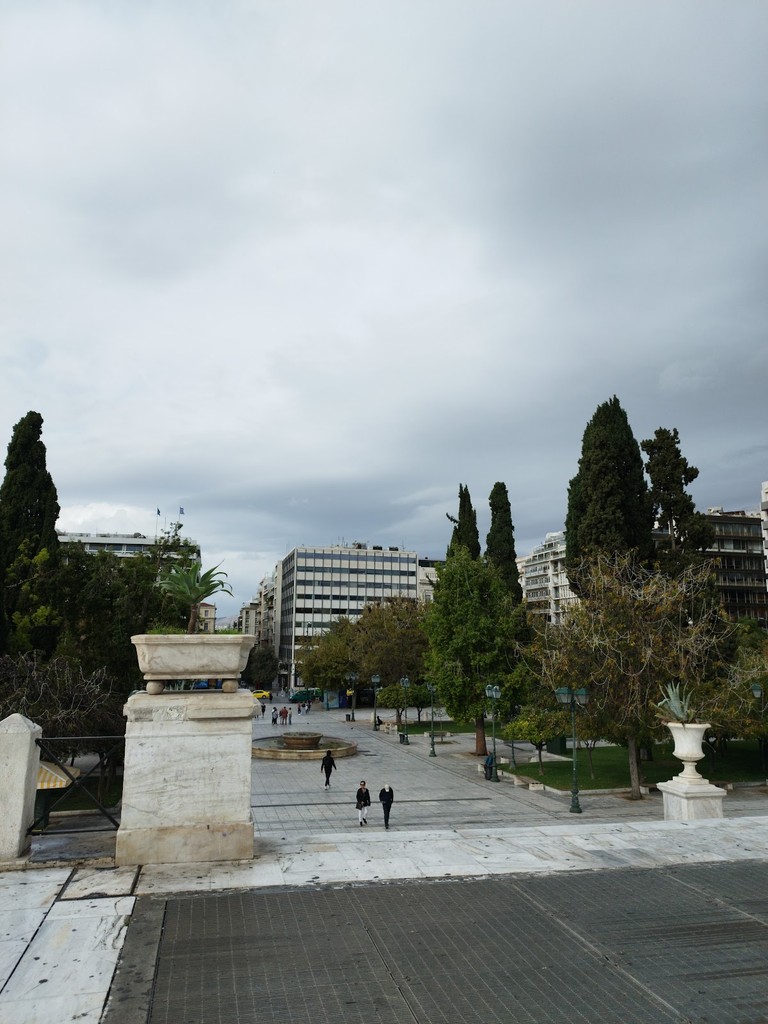
Syntagma Square (Source: Google Maps)
Syntagma Square is the political heart of Athens, located directly in front of the Hellenic Parliament. This prominent square is known for the ceremonial changing of the guard at the Tomb of the Unknown Soldier, where Evzones, dressed in traditional uniforms, perform a precise and symbolic ritual. The square serves as a focal point for political demonstrations and public gatherings, reflecting the democratic spirit of Greece. Surrounded by important buildings and lush gardens, Syntagma Square is an essential part of Athenian life, offering a blend of history, politics, and culture. It connects visitors to various attractions, making it a bustling center of activity.
Plaka
Continue downhill to Plaka, the oldest district in Athens, where you can explore its picturesque streets, neoclassical architecture, and vibrant atmosphere.
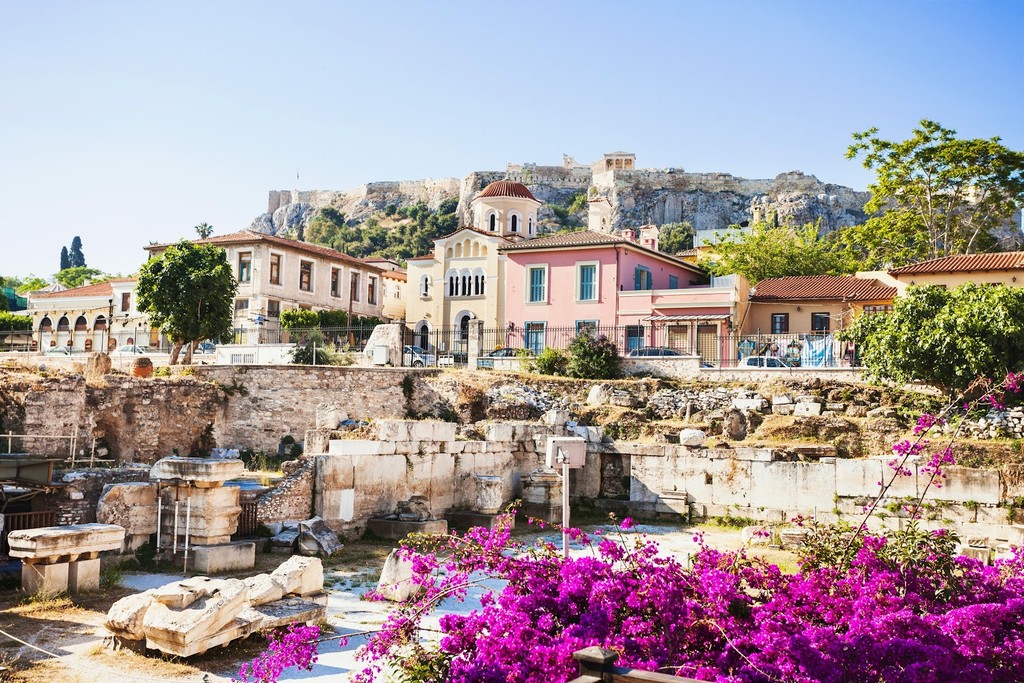
Plaka (Source: Google Maps)
Plaka, the oldest neighborhood in Athens, is characterized by its charming streets, neoclassical architecture, and vibrant atmosphere. Nestled beneath the Acropolis, Plaka offers a glimpse into the city’s past, with its narrow alleys lined with shops, cafes, and tavernas. This picturesque district is rich in history, featuring remnants of ancient Roman and Byzantine structures. Visitors can explore the area's unique blend of old and new, experiencing traditional Greek culture while enjoying modern amenities. Plaka is also a hub for artisans and local artists, making it a delightful place to wander and discover the spirit of Athens.
Brettos Bar
Located in Plaka, Brettos is Athens' oldest distillery, perfect for a midday break to sample traditional Greek liqueurs in a colorful setting.

Brettos Bar (Source: Google Maps)
Anafiotika
Wander through the charming, island-like neighborhood of Anafiotika, nestled on the slopes of the Acropolis, known for its narrow streets and whitewashed houses.

Anafiotika (Source: Google Maps)
Anafiotika is a hidden gem located on the slopes of the Acropolis, known for its picturesque, island-like charm. This quaint neighborhood features narrow, winding streets and whitewashed houses with colorful doors, reminiscent of the Cycladic islands. Established by workers from Anafi, a small island in the Aegean Sea, in the 19th century, Anafiotika offers a peaceful escape from the bustling city. The area is characterized by its traditional architecture and vibrant bougainvillea, creating a serene atmosphere. As visitors stroll through its charming pathways, they can appreciate the unique blend of nature and culture, making Anafiotika a delightful stop on any exploration of Athens.
Acropolis Museum
Just a short walk from the Acropolis, this modern museum houses an impressive collection of artifacts from the Acropolis, providing rich context to the ancient ruins.
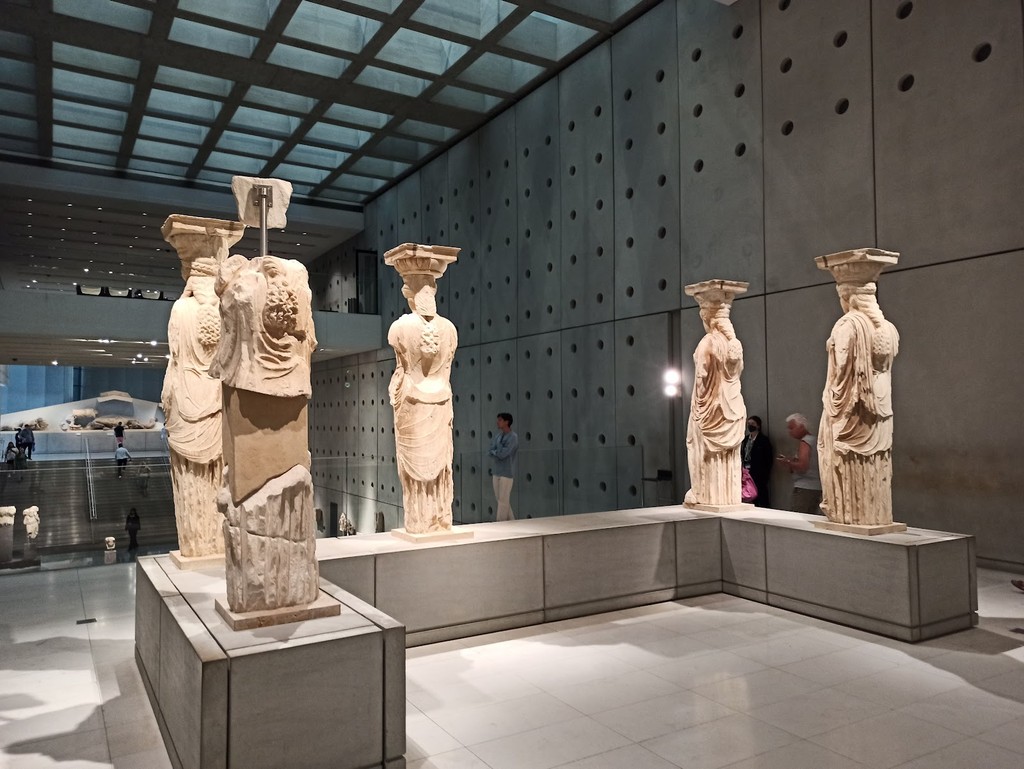
Acropolis Museum (Source: Google Maps)
The Acropolis Museum is a modern architectural marvel that houses an extensive collection of artifacts from the Acropolis. Opened in 2009, the museum showcases over 4,000 objects, providing context to the rich history of the ancient citadel. Its design features a glass floor that allows visitors to see the archaeological site beneath, enhancing the experience of exploring ancient Greece. The museum's exhibits highlight significant finds from the Parthenon, including friezes, sculptures, and everyday items, offering insights into the lives of the Athenians. The Acropolis Museum is not only a cultural treasure but also a vital link between the past and present, making it a must-visit for anyone interested in the history of Athens.
Arch of Hadrian
Nearby stands the Arch of Hadrian, a monumental gateway that symbolically separated the old city of Athens from the new city built by Emperor Hadrian.
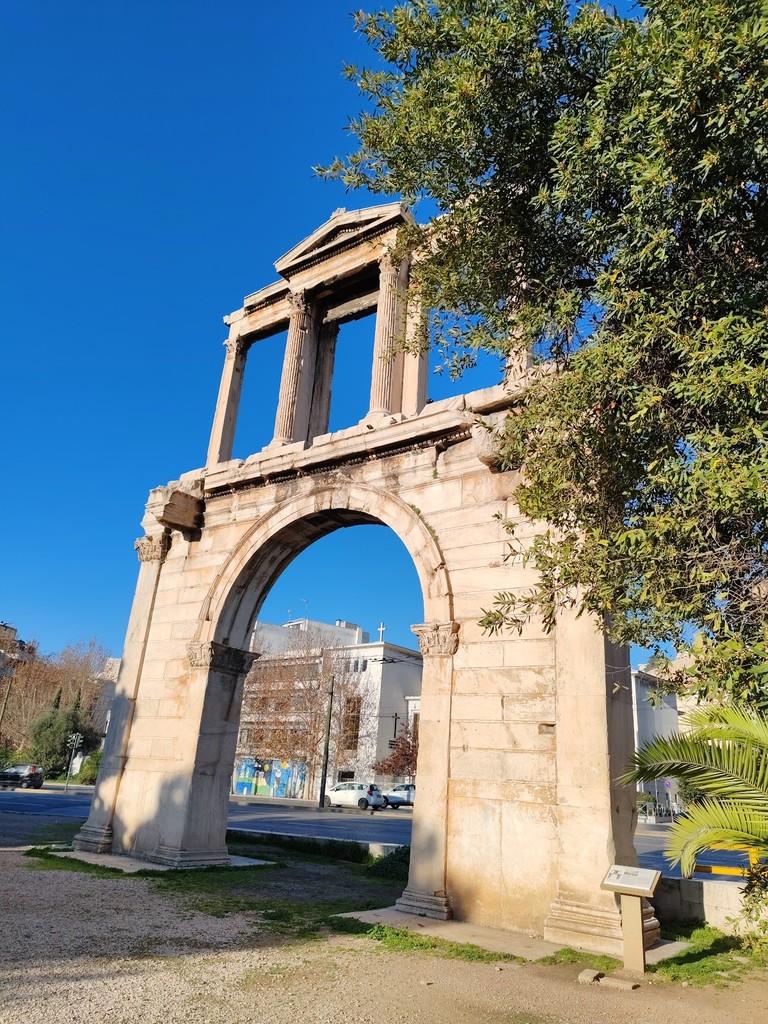
Arch of Hadrian (Source: Google Maps)
The Arch of Hadrian, constructed in 131 AD, is a monumental gateway that marks the boundary between the ancient city of Athens and the new city established by Emperor Hadrian. This impressive structure features Corinthian columns and inscriptions that celebrate Hadrian’s contributions to Athens, including the construction of the nearby Temple of Olympian Zeus. The arch symbolizes the cultural and architectural fusion of Greek and Roman influences during this period. Its strategic location near important landmarks makes it a significant historical point of interest, inviting visitors to reflect on the city’s evolution through the ages.
Temple of Olympian Zeus
A short stroll away, explore the remnants of the Temple of Olympian Zeus, once the largest temple in Greece, dedicated to the king of the Olympian gods.
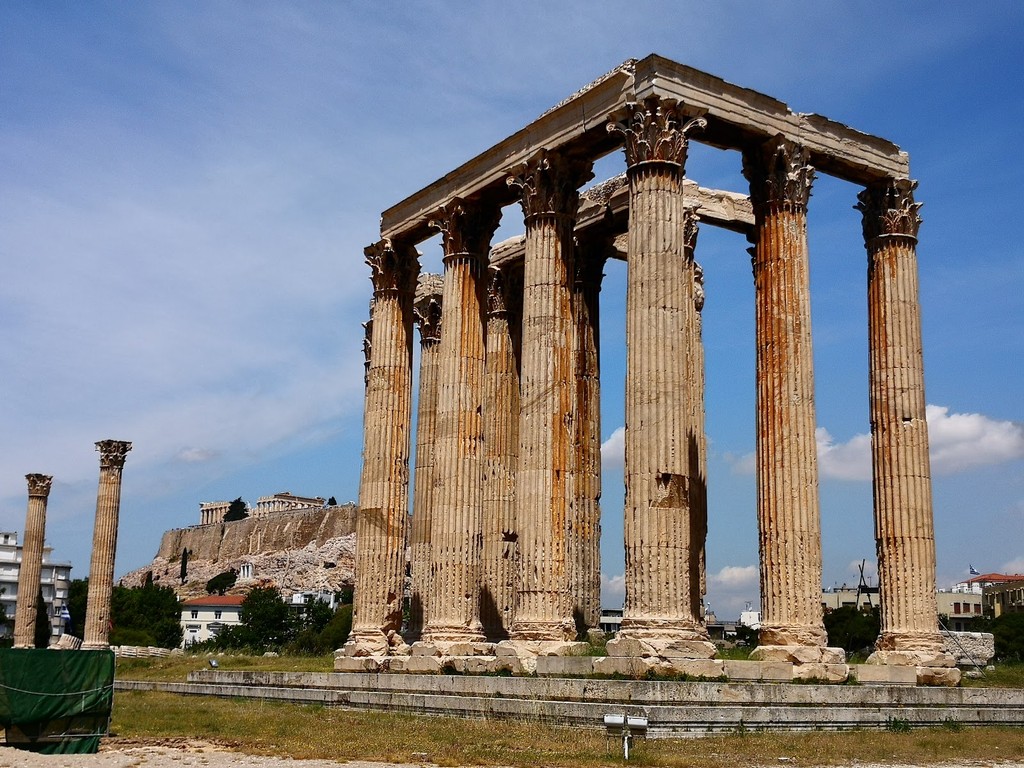
Temple of Olympian Zeus (Source: Google Maps)
The Temple of Olympian Zeus, once the largest temple in Greece, was dedicated to the king of the Olympian gods. Construction began in the 6th century BC but was not completed until the 2nd century AD, reflecting the ambitious nature of this monumental project. Originally featuring 104 colossal columns, only a few remain today, yet they stand as a testament to the grandeur of ancient Greek architecture. The temple’s design follows the Corinthian style, characterized by intricate carvings and ornate detailing. Despite its incomplete state, the Temple of Olympian Zeus remains a symbol of Athenian power and religious devotion, drawing visitors to admire its historical significance and architectural beauty.
Zappeion Hall
Located within the National Garden, the Zappeion Hall is a neoclassical building used for official ceremonies and events, showcasing elegant architecture.
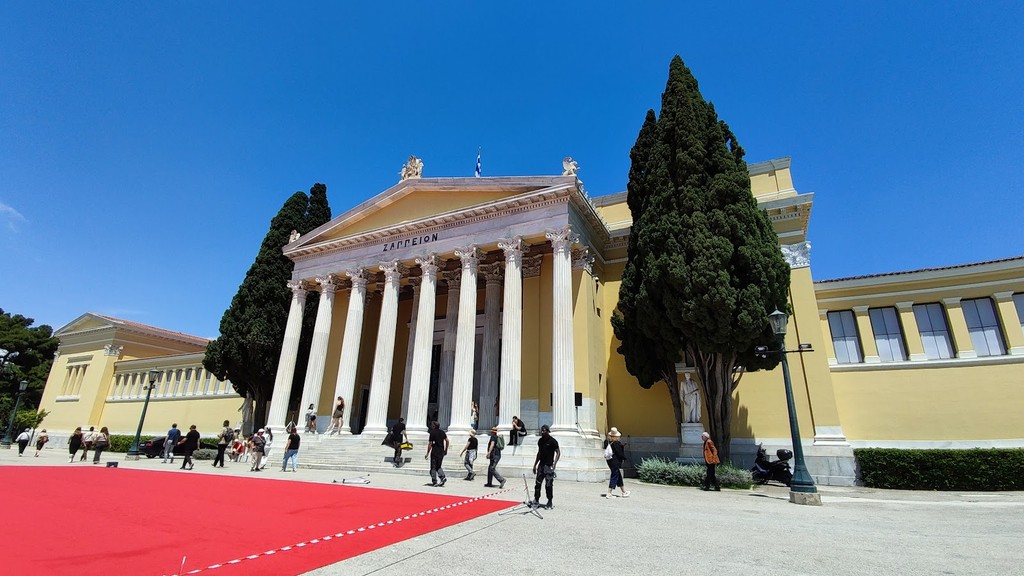
Zappeion Hall (Source: Google Maps)
Zappeion Hall, located within the National Garden of Athens, is a neoclassical building that serves as a venue for official ceremonies and events. Designed by architect Theophil Hansen and completed in 1888, the hall was named after Evangelos Zappas, a philanthropist who contributed to the revival of the Olympic Games. Its elegant architecture features a grand entrance, beautiful columns, and a spacious interior, making it a prominent landmark in the city. Zappeion Hall has hosted various events, including exhibitions and conferences, and remains a vital part of Athens’ cultural and political landscape. The surrounding gardens offer a tranquil escape, enhancing the experience of visiting this historic site.
Panathenaic Stadium
Walk to the Panathenaic Stadium, an ancient stadium that hosted the first modern Olympic Games in 1896 and is still used for ceremonial events.
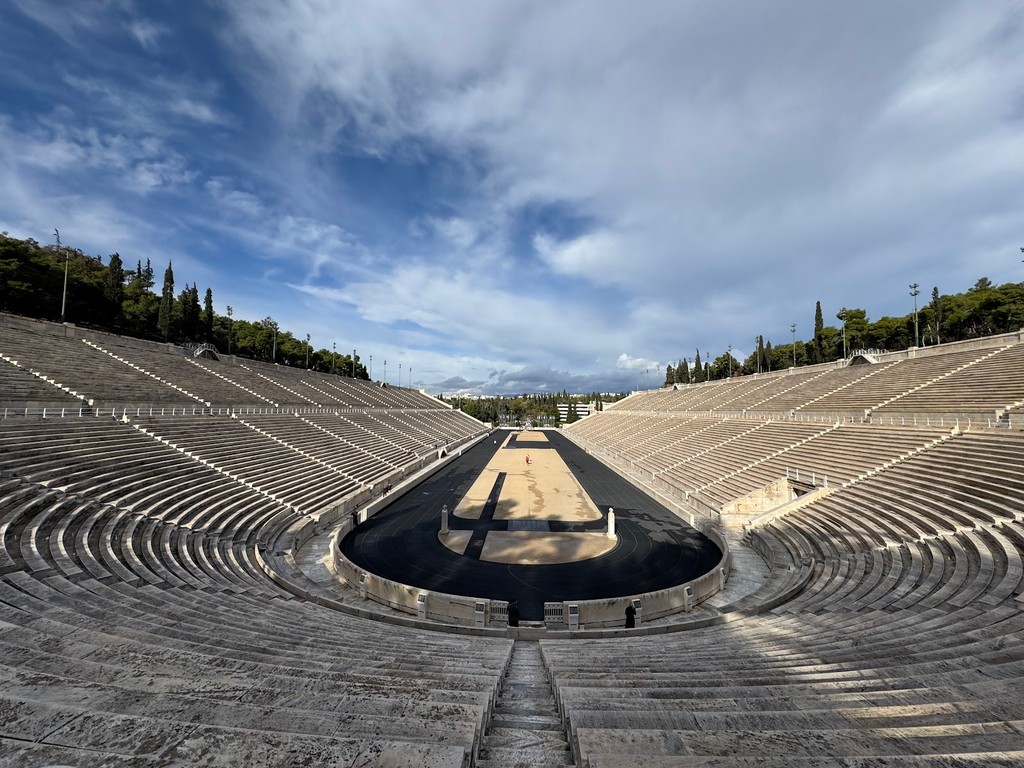
Panathenaic Stadium (Source: Google Maps)
The Panathenaic Stadium, also known as Kallimarmaro, is a historic site that hosted the first modern Olympic Games in 1896. Constructed in the 4th century BC for the Panathenaic Festival, the stadium was originally built using limestone and later renovated with white marble, giving it its distinctive appearance. The stadium has a capacity of approximately 45,000 spectators and is the only stadium in the world built entirely of marble. Today, it serves as a venue for various cultural events and athletic competitions, preserving its legacy as a symbol of sporting excellence. Visitors can explore the stadium’s impressive structure and learn about its significance in the history of the Olympic movement.
National Garden of Athens
Adjacent to Syntagma, this lush oasis offers a peaceful escape with its botanical gardens, ponds, and shaded walkways.
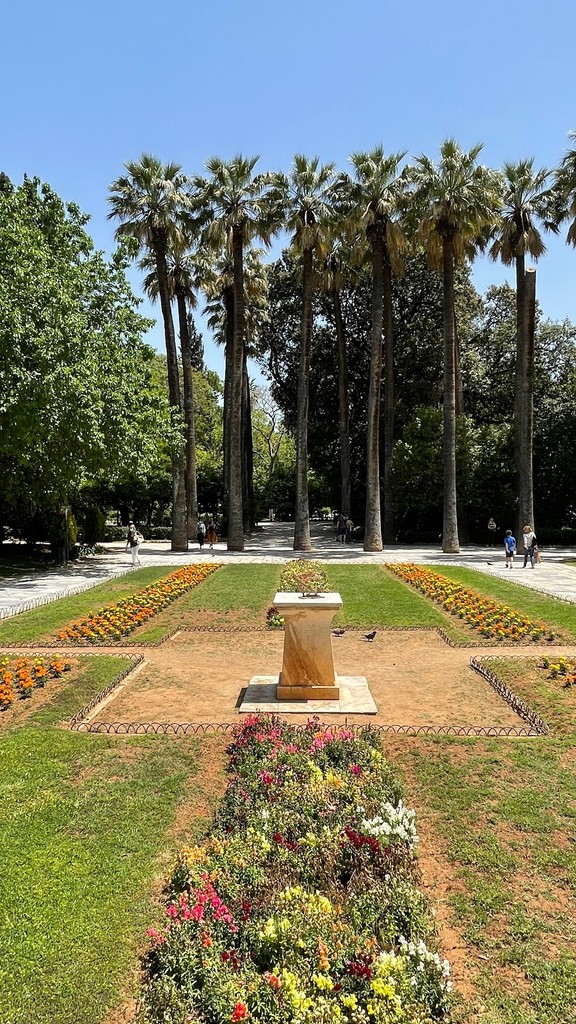
National Garden of Athens (Source: Google Maps)
The National Garden of Athens is a lush oasis located adjacent to Syntagma Square, offering a peaceful retreat from the bustling city. Covering approximately 15.5 hectares, the garden features a variety of botanical species, tranquil ponds, and shaded pathways, making it an ideal spot for leisurely strolls. Established in the 19th century, the garden was originally part of the royal palace and has since become a beloved public space. It is home to several ancient ruins, a small zoo, and a playground, catering to visitors of all ages. The National Garden serves as a green lung for the city, promoting relaxation and appreciation of nature amidst urban life.
Kolonaki
Head to the upscale neighborhood of Kolonaki, known for its chic boutiques, cafes, and vibrant cultural scene.
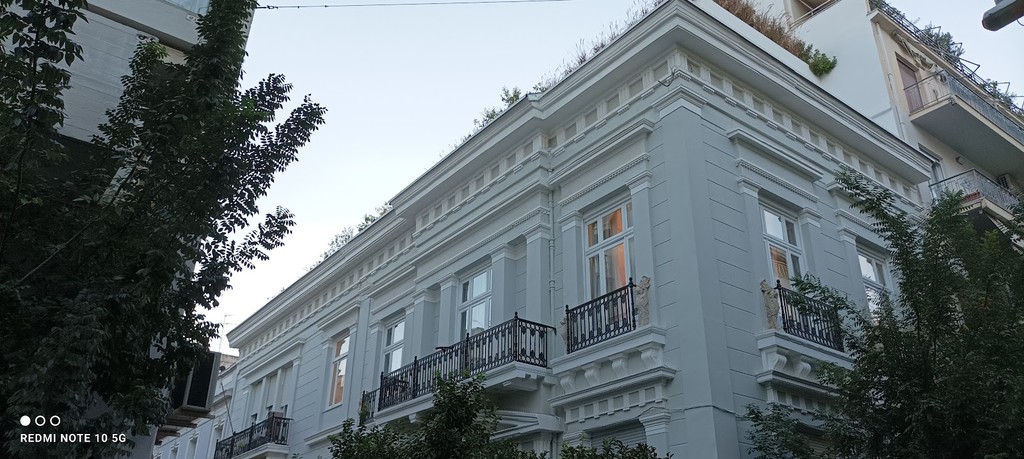
Kolonaki (Source: Google Maps)
Kolonaki is an upscale neighborhood in Athens known for its chic boutiques, stylish cafes, and vibrant cultural scene. Nestled at the foot of Mount Lycabettus, Kolonaki offers a blend of luxury and tradition, attracting both locals and tourists. The area is characterized by elegant neoclassical buildings and art galleries, showcasing contemporary Greek art. Visitors can enjoy a leisurely day exploring the fashionable shops, dining at gourmet restaurants, or relaxing in one of the many cafes. Kolonaki is also home to several museums and cultural institutions, making it a hub for arts and culture in Athens, perfect for those looking to experience the city's modern sophistication.
Café Boheme
End your tour with a relaxing coffee or snack at Café Boheme in Kolonaki, a stylish spot to unwind and reflect on your Athenian adventure.
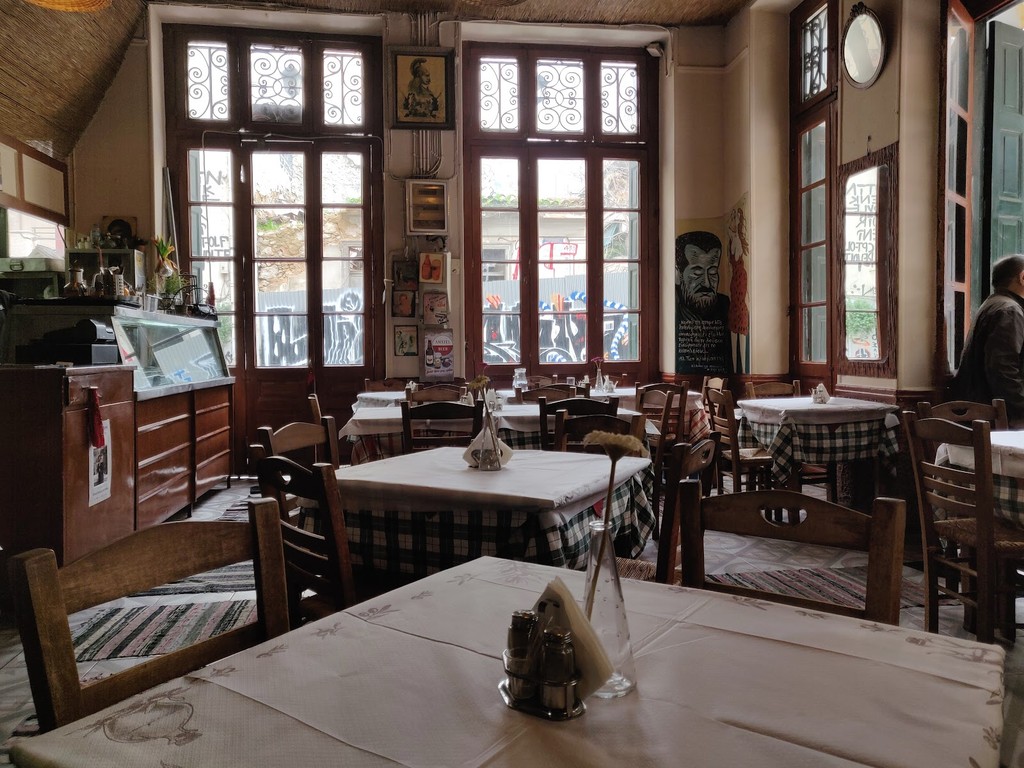
Café Boheme (Source: Google Maps)

Your travels, your rules.
Create your own Free Walking Tours.
Set your preferences, distances and anything you want to do or see.
Completely free, no payment required.